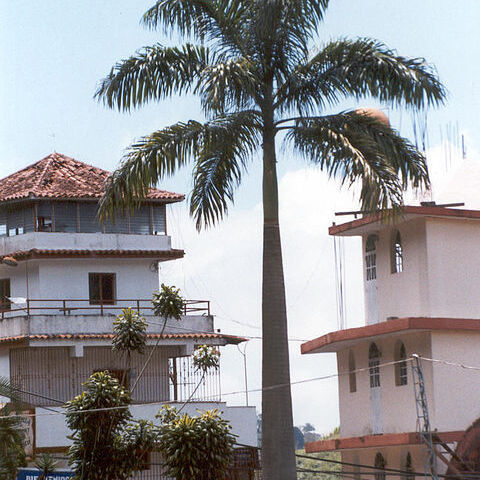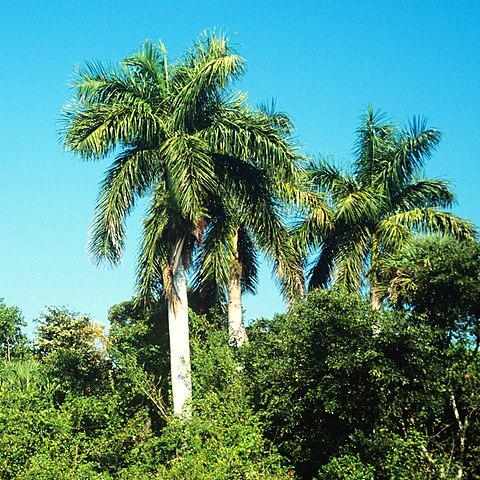Stems solitary, erect, greater than 20 cm in diam., smooth, unarmed. Leaves: leaf bases unarmed, forming crownshaft, crownshaft prominent, green, smooth; petiole unarmed; blade pinnate; plication reduplicate; segments linear-lanceolate, in more than 1 plane. Inflorescences axillary below crown of leaves, paniculate, with 2 or 3 orders of branching; prophyll tubular; peduncular bract greatly exceeding prophyll, leathery, splitting longitudinally on abaxial side and circumscissilly at base; rachillae covered with copious caducous dendritic trichomes, becoming glabrous. Flowers unisexual, sessile, in triads of 1 pistillate flower flanked by 2 staminate flowers. Staminate flowers: sepals 3, imbricate, membranaceous; petals 3, valvate; stamens 6(--10, rarely); anthers dorsifixed, often twisting upon drying; pistillode minute, obscurely 3-cleft. Pistillate flowers globose to conic; sepals 3, imbricate; petals 3, basally connate, distally valvate; staminodes 6, basally connate, adnate to corolla basally; pistil 1; ovules 1; style indistinct; stigmas 3. Fruits drupes, fibrous; stigmatic scar basal; exocarp ripening from green to red to purplish black at maturity, thin, leathery; mesocarp fleshy, oily; endocarp hard. Seeds 1, nearly globose [obovoid], dorsiventrally compressed, abaxially attached to endocarp; endosperm homogeneous; embryo basal; eophyll undivided, linear-lanceolate. x n = 18.
More
Very tall majestic columnar monoecious spineless feather palms, bearing a long crownshaft-at apex of woody bole and at the base of it clusters of flowers and fruits, that is inflorescence and infructescence infrafoliar; trunk variously swollen, lightly ringed: leaves caducous from base of crownshaft; crown comprised of a large spreading or drooping canopy of many long leaves with drooping narrow pinnae and at the apex a long projecting sword-like unfolded new leaf: spadices at first erect or ascending, usually 2 or more together, comprised of 2 cymbae or spathes that eventually open on one side to liberate the cluster and to discharge the abundant meal (not pollen) within, one cymba falling early and often not ob-served, the inner much longer pointed cymba falling later with a crash or often hanging as a dead dry stave; spadix much branched, white, mealy, eventually be-coming glabrous or retaining more or less pubescence: flowers scattered on the rachillae, not sunken, normally 1 pistillate between 2 staminates; sepals 3, very short, imbricate; petals longer, valvate; stamens mostly 6; pistil of 3 carpels, only 1 of which commonly develops into a globular or bean-like drupe-like 1-seeded fruit not exceeding about 2 cm. in longest diameter, the more or less pulpy sarco-carp providing food for pigs; micropyle and embryo basal.


